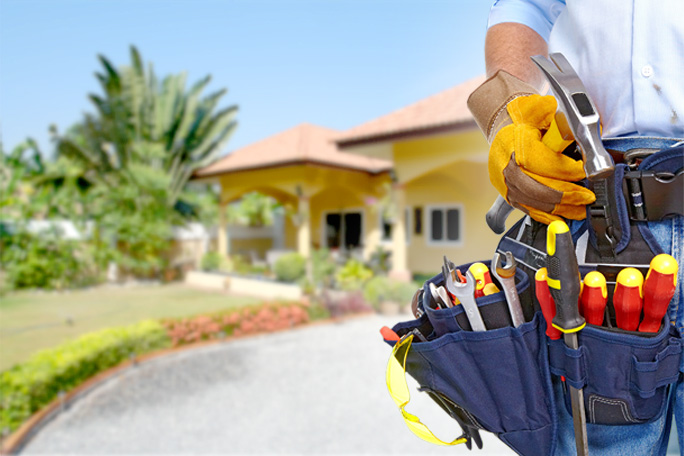
PMI Property Management is an all-service, locally-owned property management firm. The company provides professional services that include property management, tenant relationships, collections and lease fees. It also uses effective advertising and market techniques. PMI boasts a reputation for being one of the best property management companies in America, managing more than 15 million assets.
Private Mortgage Insurance is a type of insurance that protects the lender if the borrower defaults on the loan. The type of loan determines the monthly payment. It generally costs between 0.1 percent to 2% of the total loan amount. This extra fee may not be affordable, so you might consider a loan that has a lower interest rate.
You can avoid PMI by making a downpayment of at least 20% of the purchase price of your home. This amount will be based on current market value. You automatically build equity when you make a deposit. As home prices rise, you will also build equity. If you have at least 20% equity, then you can ask for the cancellation of your PMI plan.

You can deduct your PMI expenses from your taxes through the Internal Revenue Service. This deduction is subject to certain limitations. For example, it has not been extended by the IRS to 2022. You can still get a tax deduction even if your annual PMI cost is less than 10 percent your adjusted gross.
A house purchase with little or no down payment is risky. The monthly payments can be higher than the home's market value, and you could end up owing more than the home is worth. Private mortgage insurance is required by most lenders. It protects the lender in the case of default.
Piggybacking is another option to PMI. Piggybacking is a method that rearranges your loan into an 80/10/10 split. The first loan is for 80% of the property's total value, and the second loan pays 10%.
Another alternative to PMI is a single-premium policy. Single-premium policies are paid in full at the time of closing. If you pay the loan in full, you can bundle your insurance costs into one single payment.

In general, the higher the interest rate you pay, the smaller the down payment you make on a house. There are many down payment assistance programs that can help you obtain a low interest rate home loan. These include grants, state and federal programs, and lender-offered loans. For more information about these programs, contact your bank or mortgage lender.
A high down payment can be a great way of building equity. It's important to remember that your down payment won't be as large if your home is refinanced after a few years. It might be more difficult to refinance if your home's value drops.
FAQ
What does the average handyman charge an hour?
A handyman charges between $50-$75 per hour. Many have been doing this job for many years. Their average time on any job is approximately 10 hours. They don't need to advertise; they are well known in the neighborhood.
They are more likely to become specialists and build customer relationships over time.
The key differentiator between them and other contractors is that they're quick, reliable, and cheap.
Most people have at least two or three of these guys that they can trust enough to call for help when they need it.
Some people are so successful that they start their own company.
How many hours does it normally take to complete a typical DIY project?
A DIY project can take anywhere from 2 to 4 hours. The length of the project will vary based on its complexity and difficulty.
What happens if a handyman causes me damage or doesn't do his job as I would like?
If anything goes awry during the project, you'll need to inform him immediately. It is best to note down what happened and attach photos. Call your insurance company, and make a claim.
How long does it take to become a handyman?
To be a professional handyman it takes years of hardwork. It begins with helping friends and families and grows to become a full-time profession.
You'll start to learn all the skills needed as you go along.
Are handymen insured?
Yes! Yes. Most insurance companies cover liability claims over $1 million for accident property damage or bodily harm. Your insurance company will usually compensate you for any damages that occur during the project.
What qualifications are needed to be a handyman
Being a handyman requires patience. You should also have experience working on electrical systems, carpentry skills, plumbing knowledge, and a strong understanding of home maintenance.
It is likely that you will find many jobs for people who have the right qualifications. But if you don’t, you may not be qualified.
You may want to look into getting training at a school that offers these courses.
Do I need a handyman trained to do my work
No. Handymen already possess the knowledge and skills to complete any project. You only need to provide the materials needed to complete the task.
Statistics
- A franchise was approximately $110,000 with a franchise fee of $14,900, according to a spokesperson for a national handyman franchise. (en.wikipedia.org)
- Our handyman services for seniors are provided by professional senior helpers who have been serving the community for over 20 years with 98% customer satisfaction. (cantatahomeservices.org)
- With a strong housing market, the handyman and general maintenance worker industry are expected to grow by nearly 10% in the next decade. (housecallpro.com)
- An estimate was that in 2003, the market for home maintenance and repair spending was up 14% 2001 to 2003. (en.wikipedia.org)
- “Before the pandemic, 40% of people asked how we could estimate a job when we weren't there,” Rose recalled. (inquirer.com)
External Links
How To
How to Replace a Broken Tile
Step 1: Take away the old tiles.
Take out the tiles and place them on a new flooring surface. You'll want to keep these intact if you use them later. Note which pieces are missing or damaged to avoid having to search for replacements.
Step 2 – Choose New Tiles
Here are some options for tile repair.
-
Locate a replacement tile that is the same as the one you just removed.
-
You can use the measurements taken when you removed the tile to locate a matching piece. This allows you to easily find the perfect size without needing to measure again.
-
Look for various colors, patterns, textures, sizes, shapes, etc.
-
Consider what grout you prefer to use. Some people prefer a certain color, others like to mix it up.
-
Choose a tile that resists moisture.
-
Consider the location of your tile. You can save both time and money by making sure that there is enough room for proper installation.
-
After you've selected your tile, place your order online or at your local Lowe's shop.
Step 3 - Place the tiles.
Install your tiles using the same method you used before. Be careful to align them properly so they fit together perfectly.
Step 4 – Clean up
Clean up any debris on the floor before you apply the last layer of protective material.
This will prevent dirt and dust from settling into the cracks between the tiles that could cause mold.
Step 5: Sand down the Floor
After cleaning, sand the floors to remove any particles.
Step 6 - Close the door
After the floor has been smoothed, you can apply protective coatings to the tiles. You should wait until this stage as wet paint can stain new tiles.
Remember, you can always use a product called "damp-and-dry" on your floors to help protect against stains.
But it won't address every issue that might arise after installing your new tiles. You might want to add an anti-slip coating to the protective layer if there are a lot of children.
Remember to let the protective sealer remain on for several additional weeks before you move into your home.